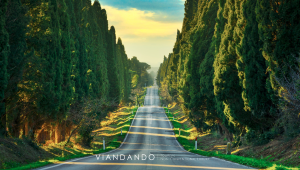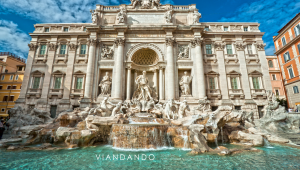The islands are located in the shallow Venetian Lagoon, an enclosed bay that lies between the mouths of the Po and the Piave rivers (more exactly between the Brenta and the Sile). Parts of Venice are renowned for the beauty of their settings, their architecture, and artwork. The lagoon and a part of the city are listed as a UNESCO World Heritage Site.
In 2014, 264,579 people resided in Comune di Venezia, of whom around 55,000 live in the historic city of Venice (Centro Storico). Together with Padua and Treviso, the city is included in the Padua-Treviso-Venice Metropolitan Area (PATREVE), with a total population of 2.6 million. PATREVE is only a statistical metropolitan area.
The name is derived from the ancient Veneti people who inhabited the region by the 10th century BCE. The city was historically the capital of the Republic of Venice. Venice has been known as the “La Dominante,” “Serenissima,” “Queen of the Adriatic,” “City of Water,” “City of Masks,” “City of Bridges,” “The Floating City,” and “City of Canals.”
The Republic of Venice was a major financial and maritime power during the Middle Ages and Renaissance, and a staging area for the Crusades and the Battle of Lepanto, as well as a very important center of commerce (especially silk, grain, and spice) and art in the 13th century up to the end of the 17th century. The city-state of Venice is considered to have been the first real international financial center which gradually emerged from the 9th century to its peak in the 14th century. This made Venice a wealthy city throughout most of its history.
It is also known for its several important artistic movements, especially the Renaissance period. After the Napoleonic Wars and the Congress of Vienna, the Republic was annexed by the Austrian Empire, until it became part of the Kingdom of Italy in 1866, following a referendum held as a result of the Third Italian War of Independence. Venice has played an important role in the history of symphonic and operatic music, and it is the birthplace of Antonio Vivaldi. Venice has been ranked the most beautiful city in the world as of 2016. The city is facing some major challenges, however, including financial difficulties, erosion, pollution, subsidence, an excessive number of tourists in peak periods and problems caused by oversized cruise ships sailing close to the banks of the historical city.
Venice is an important tourist destination for its celebrated art and architecture. The city gets up to 60,000 tourists per day (2017 estimate). Estimates as to the annual number of tourists vary from 22 million to 30 million. This ‘overtourism’ creates overcrowding and environmental problems in its canal ecosystem. By 2017, UNESCO was considering the addition of Venice to its “In-Danger” list which includes historical ruins in war-torn countries. To reduce the number of visitors that are causing irreversible changes in Venice, the agency supports limiting the number of cruise ships as well as creating a full strategy for more sustainable tourism.
Tourism has been a major sector of the Venetian industry since the 18th century, when it was a major center for the Grand Tour, with its beautiful cityscape, uniqueness, and rich musical and artistic cultural heritage. In the 19th century, it became a fashionable center for the “rich and famous”, often staying or dining at luxury establishments such as the Danieli Hotel and the Caffè Florian. It continued being a fashionable city in vogue right into the early 20th century. In the 1980s, the Carnival of Venice was revived and the city has become a major center of international conferences and festivals, such as the prestigious Venice Biennale and the Venice Film Festival, which attract visitors from all over the world for their theatrical, cultural, cinematic, artistic, and musical productions.
To visit Venice with us, contact info@viandando.it
Test Credit: Wikipedia
Photo Credit: Enzo Romano






